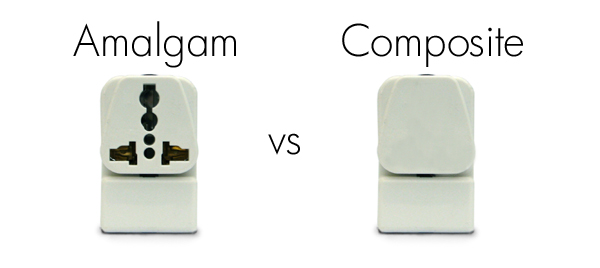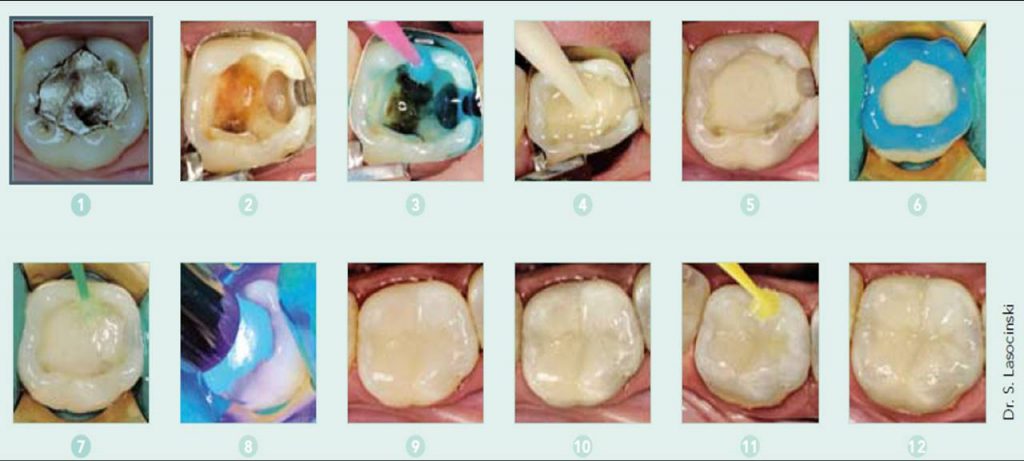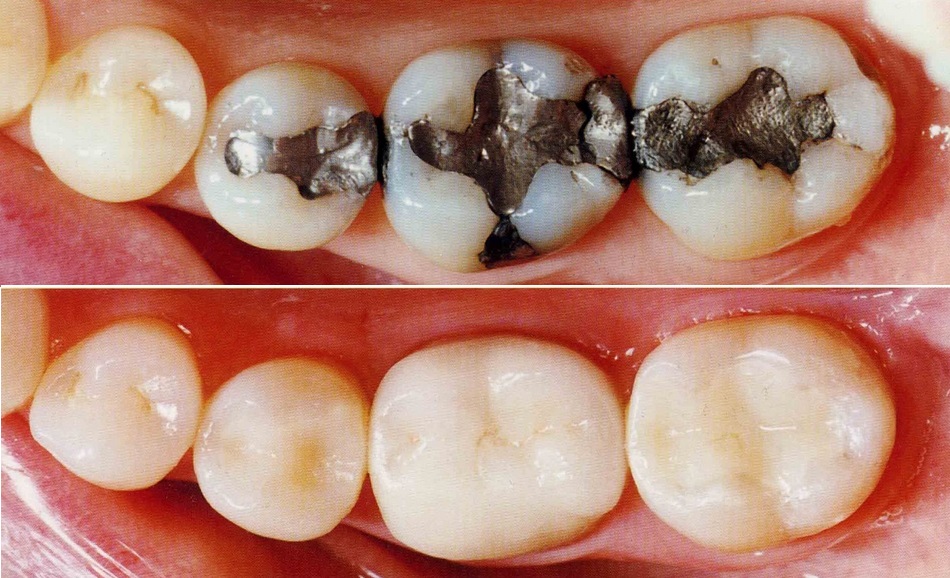
While the majority of dentists now use mercury-free composite fillings, some continue to use dental amalgam, also known as “silver fillings”. Over the years, concerns have been raised about the use of amalgam because it contains mercury. Here are answers to some common patient questions about dental fillings.
- The release of mercury vapor in the mouth lessens the strength, longevity, and resilience of the filling.
- Corrosion of the surface of the filling due to the persistently wet environment. This process is similar to rusting iron.
- Attrition of the surface and edges of the filling from eating, clinching, and grinding cause the edges to be tattered and irregular, causing food traps.

What you can’t see: decay often occurs underneath amalgam fillings, and it doesn’t always present on x-rays. By removing “silver fillings” and replacing with white composite resin, your dentist will accurately assess any future damage and treat with tiny fillings versus more indepth restorations like crowns, root canals, and/or dental implants.

Amalgam v/s Composite Fillngs
However, we do know with certainty that the amalgams are incredibly detrimental to the health of the tooth. So generally, we believe that if metal fillings are present, they should be removed and replaced with a restoration, porcelain or composite, which will restore the strength of the tooth to last in the long term.
BOTTOM LINE: we remove amalgam fillings because we know (with 99% accuracy) that if the margins are not sealed and they are of a certain age, there is decay destroying the tooth structure below the filling.
